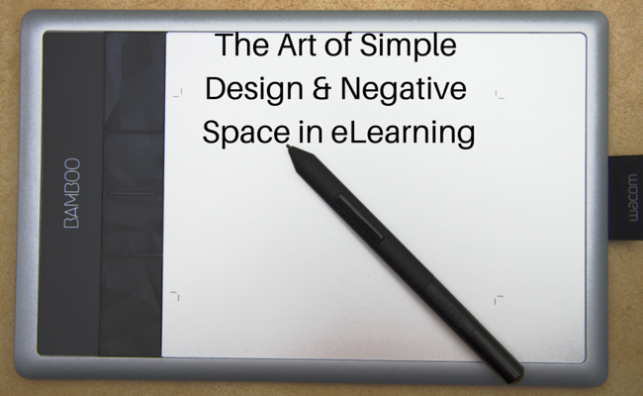
Simplicity is key when designing an eLearning course.
Why? Because with too many design elements, your learners become overwhelmed and the information retention rate drops.
Your course needs to be clean, simple, and easy to digest with just enough interesting elements to hold your learners’ attention.
So how do you design an eLearning course with simplicity in mind? Here are a few tips.
Get rid of duplication
Any time you see an aspect of your design that’s simply re-stating information explained elsewhere, cut the extra out. Your design should compliment and enhance the material—not restate it and add clutter.
For example: Say you have an interactive bulletin board in your course with different notes attached that a user can access for more information. Since there’s already a lot of information up on the board, the design should be simple—there’s no need for extra graphics that illustrate each note on the board.
Use negative space
Negative space, or white space, is the empty areas around your content. Making good use of negative space means that your information and graphics have room to breathe. There should be ample space between images, text, and margins.
Don’t overcrowd your courses—too much happening in the design department can be a form of information overload. Negative space makes courses appear cleaner, more natural, and makes the information more easily digestible.
Intuitive Navigation
How a learner navigates the material is influenced by the simple graphic design of the course. When it’s too complex or stylized, users can become confused or lose confidence in the intuitiveness of the course.
Your goal should be to maximize clarity through your design and make the course as user-friendly as possible. While you may have developed a unique navigation feature, leave it out unless its use is still obvious to the average user.
Keep the Company in Mind
Think about the design elements behind the brand for which you’re building an eLearning course and use them as your guiding light. The client’s branding should influence color, fonts, and overall presentation, but in a subtle, understated manner.
Keep the objectives for the course front and center when designing and focus all elements (including graphic design) into helping reach those goals. This will help you resist the urge to overdo it in the graphics department.
The Art of Simple Design
Great eLearning design is aesthetically pleasing in its simplicity. Think of brands like Apple and Google that thrive in their non-complex design ideology and then strive for that level of clean, crisp design that’s uncomplicated and straight to the point.
Less is more, right?
